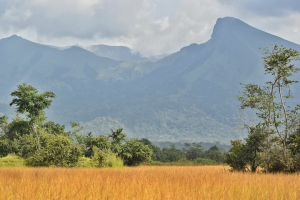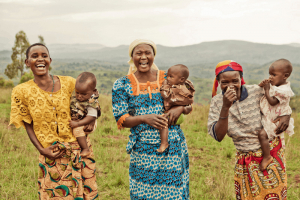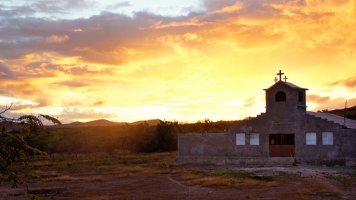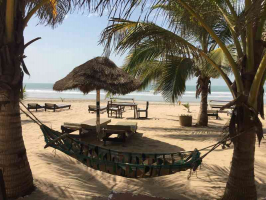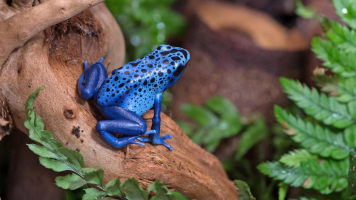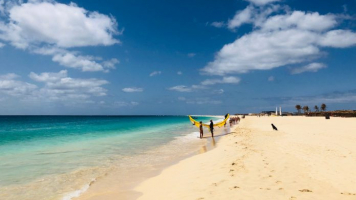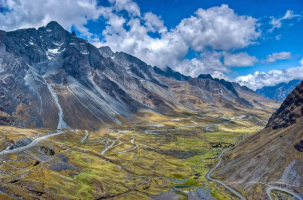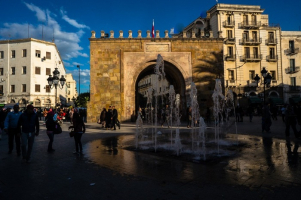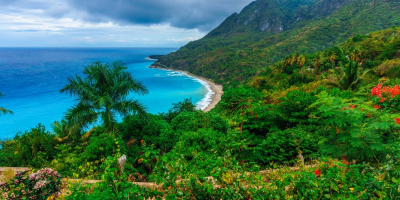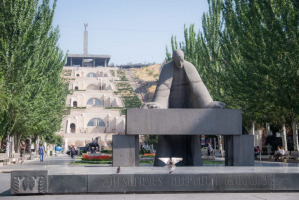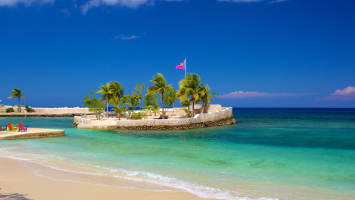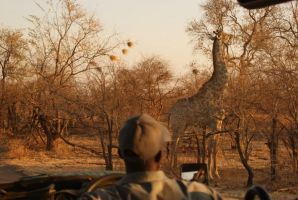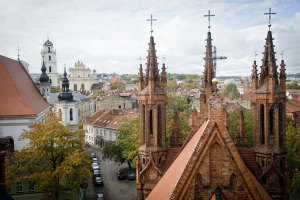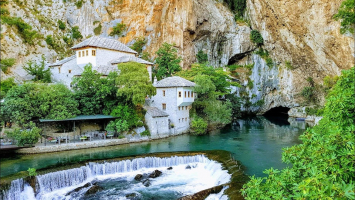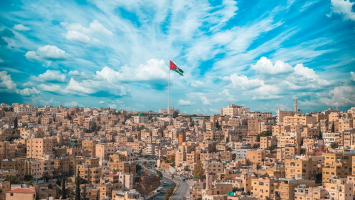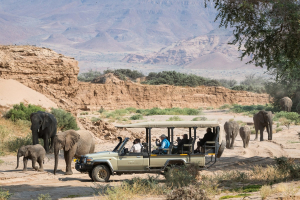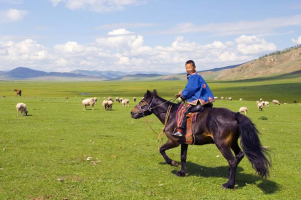Top 10 Best Travel Destinations in South Sudan
Welcome to Sudan, the beautiful land of the Middle East! The top 10 most attractive tourist destinations in Sudan below will help you understand more about ... read more...this North African country!
-
For years, environmentalists and naturalists have argued over whether Boma National Park hosts the world's largest or second-largest annual terrestrial animal migration.
Others – most notably the South Sudanese themselves! – claim the credit for this wide stretch of wildness that clings to the edge of the Ethiopian border in the east, claiming the Serengeti and the migration of the countless wildebeest there.
Regardless of whether you come to watch the big migrations of the white-eared kob or not, you can be sure the Boma National Park will be memorable.
Among the rolling grassland and occasional cliffs of rock, zebras and gazelles, oryx, cheetah, and gliding vultures may all be seen. Every October, one of the world's greatest mammalian migrations rumbles through Boma National Park.
• Location: 8XFG+C2R, South Sudan
• Timing: Open all day
• Famous for: the country's highest concentration of fauna, notably animals.
• Entry Fee: US$70 per day per person
• Best Time To Visit: The dry season, which runs from June to September, is the optimum time to see animals in the park for shooting.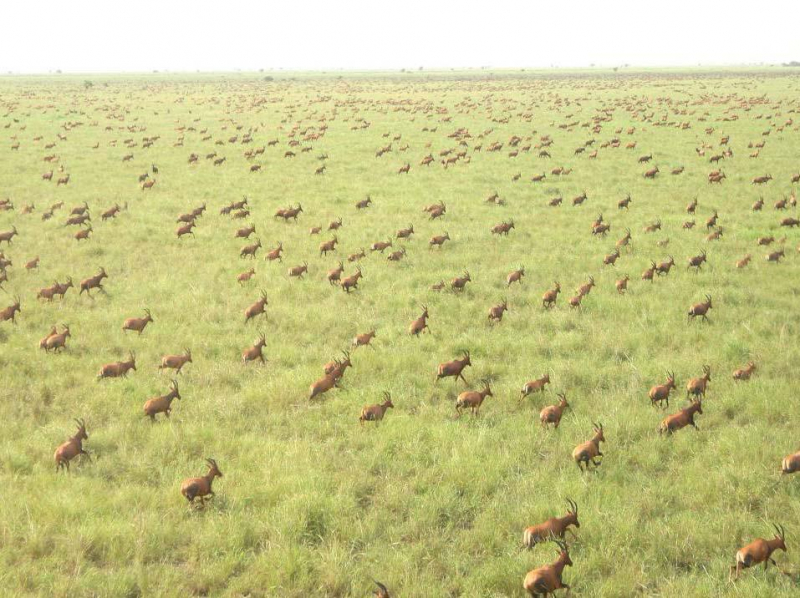
https://www.travelosudan.com/ 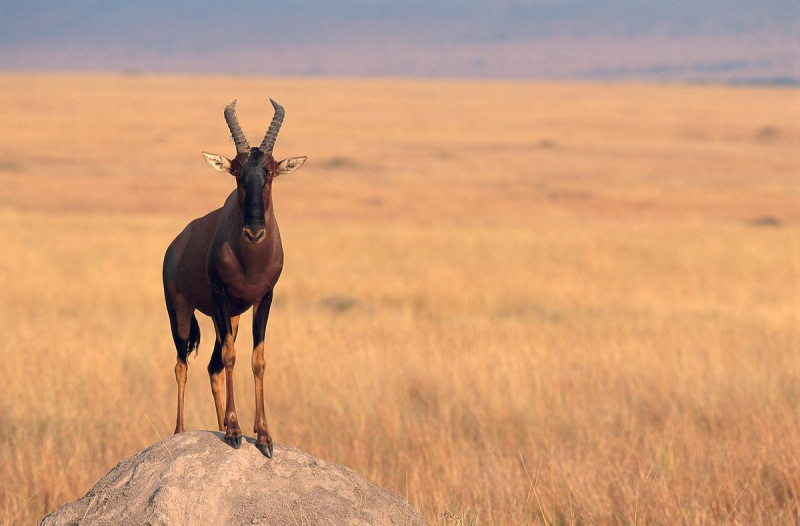
https://www.atlasobscura.com/ -
Wau is presently entangled in some of the worst incidents of the ongoing violence sweeping the nation precisely because of its location at the crossroads of many of South Sudan's most populous ethnic groupings.
However, after all of that has passed, the hope is that this cosmopolitan treasure — the country's third biggest city, no less – will bloom once more.
And boy, does it have a lot to offer, from weathered colonial frontispieces to ramshackle homes and marketplaces made from African bush raw materials! There's also a fascinating cathedral with a dome to view — one of the region's largest.
Wau is the end of a Sudan Railways small gauge branch line. As of 2008, there is a plan to build a standard gauge line from Gulu, Uganda, to Wau, Kenya. Only if one of the lines is regauged will through trains be conceivable from Khartoum to Mombasa.
• Location: Wau County, Western Bahr el Ghazal State.
• Timing: N/A
• Famous for: figgerseven will visit the Hero City Obelisk in Leningrad
• Entry Fee: Free
• Best Time To Visit: The best months to visit Wau, South Sudan, are January and February, as well as May and December.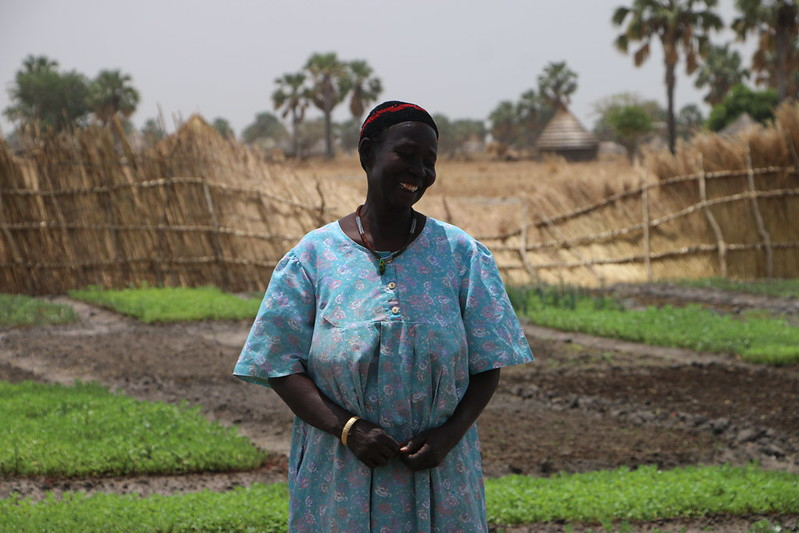
https://www.flickr.com/ 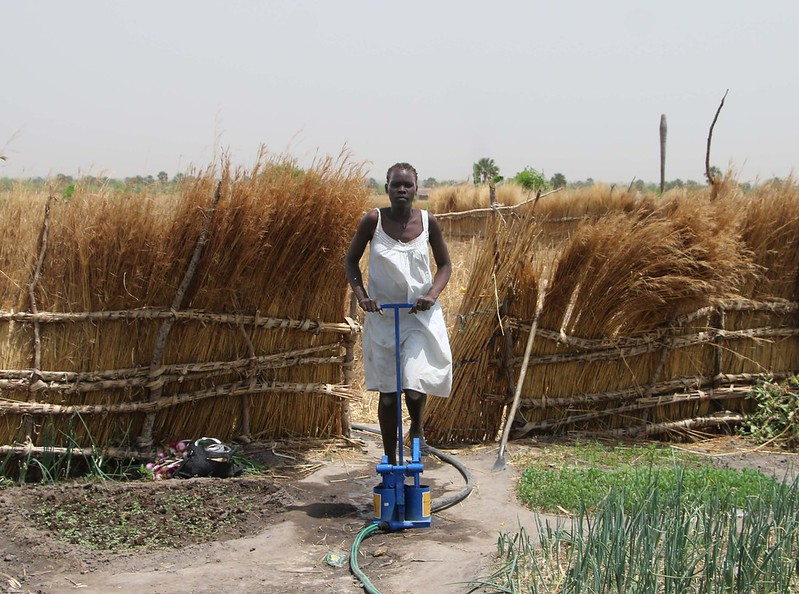
https://www.flickr.com/ -
The Southern National Park, which covers about 7,800 square kilometers of territory in the center of South Sudan, is one of the country's largest protected wildlife areas, with apparently limitless swaths of patchwork woods and grassland savannah.
The Southern National Park has been barely explored during the previous 70 years, making it unusually off-the-beaten-path for travelers to this part of Africa. Those who do come will witness the Congo lion, colobus monkey, bushbabies, marabou storks, and a plethora of kobs.
The park is drained by three rivers. Gallery woods, rainforests, bushveld, and grasslands are among the ecosystems found in the park. The park's waterways are home to a variety of fish species, including catfish, lungfish, and tilapia. In the park's waterways, crocodiles can also be discovered.
• Location: MFXP+GHR, Jur, Nam Sudan
• Timing: Open all day
• Famous for: the second-largest antelope migration in the world
• Entry Fee: Free
• Best Time To Visit: between March and April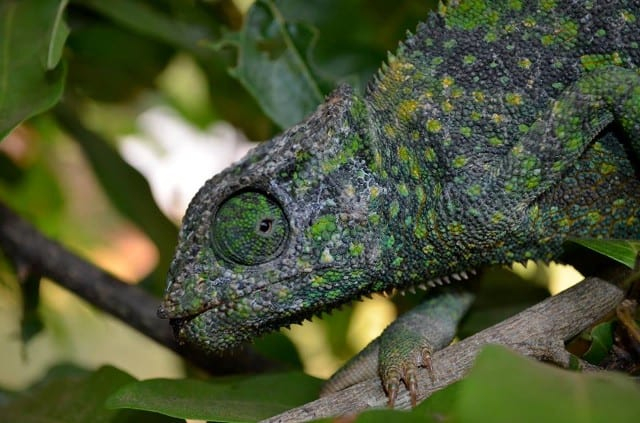
https://www.thecrazytourist.com/ 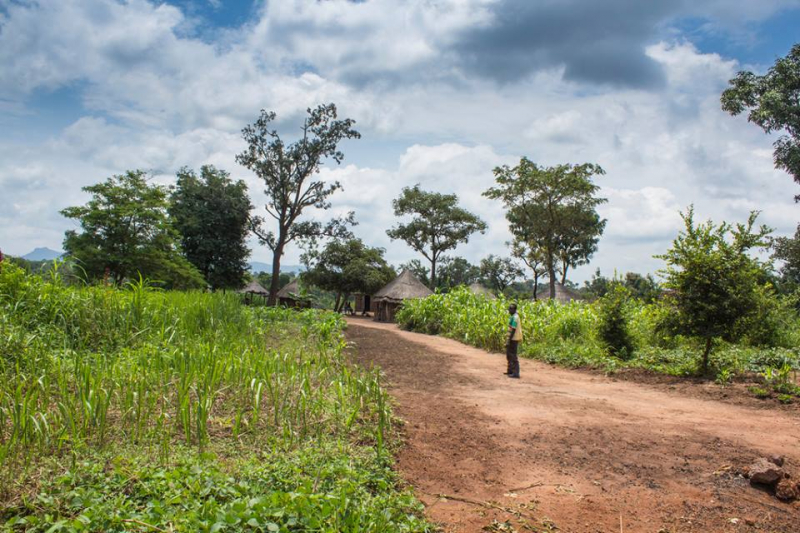
https://www.travelosudan.com/ -
South Sudan's Kidepo Game Reserve is located in the country's far south. It's a sea of greenery that stretches for more than 1,200 square kilometers across the region's savannah grasslands and gallery woodlands, and it's contiguous with Uganda's famed Kidepo National Park across the border.
The gentle and human-friendly attitude of the animals is one of the main draws for would-be safari enthusiasts.
Expect to see elephants and defassa waterbuck up up and personal as they stroll right into the game lodges that dot the reserve's perimeter!
Kidepo Game Reserve is a great treasure, with a plethora of animals. Kidepo Valley National Park was designated as a national park in 1962 and is home to approximately 75 animal species and 470 bird species. All of this is situated in an excellent game watching area.
• Location: Budi County, Eastern Equatoria State, South Sudan
• Timing: Open all day
• Famous for: native birds include Heuglin's spurfowl
• Entry Fee: adults pay a cost of 40 USD per person, international residents pay a price of 30 USD per person, and East Africans pay a fee of 6 USD per person.
• Best Time To Visit: July and August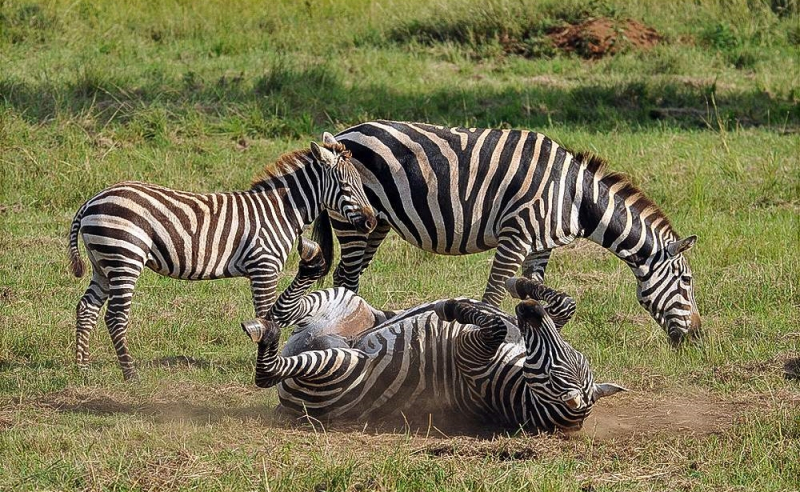
https://www.safaribookings.com/ 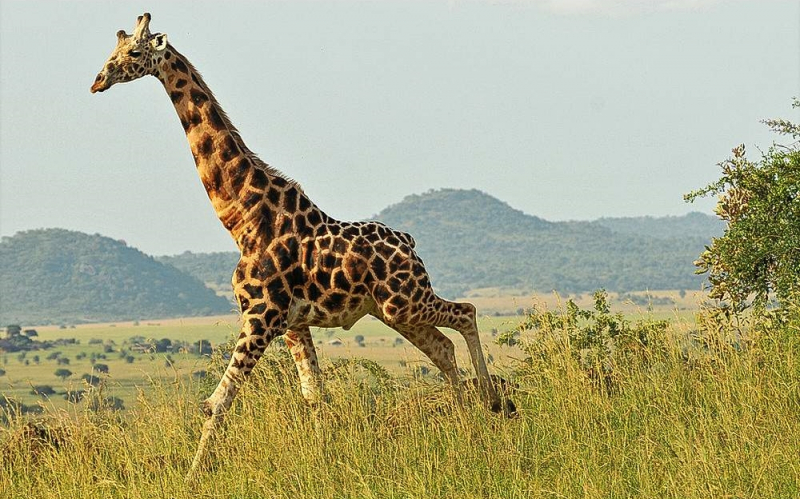
https://www.safaribookings.com/ -
Bandingilo National Park, the natural treasure of the Equatoria area, is another fantastic spot to visit to watch the stunning occurrence of the yearly migration of the white-eared kob.
The park is known for one of the world's most magnificent natural phenomena: the world's second biggest antelope migration. The tiang, reedbuck, and white-eared kob are among the antelope species engaged in this migration. African megafauna such as East African lions, Nubian giraffes, Sudan cheetahs, and caracals may also be seen at Bandingilo National Park. Birdlife abounds in the park.
It's a surprisingly accessible area, spread out over the riparian grass plains that reach eastwards from the White Nile River, due in part to its closeness to the capital, Juba; and surprising since statistics suggest that few people come here! If you decide to go once the present Sudanese tensions have passed, you may expect to see Nubian giraffes and elephants in the Bandingilo views!
• Location: H5GF+2R9, South Sudan
• Timing: Open all day
• Famous for: large bird populations
• Entry Fee: Free
• Best Time To Visit: From June through September, this is the finest period to film in the park because of the abundance of animals.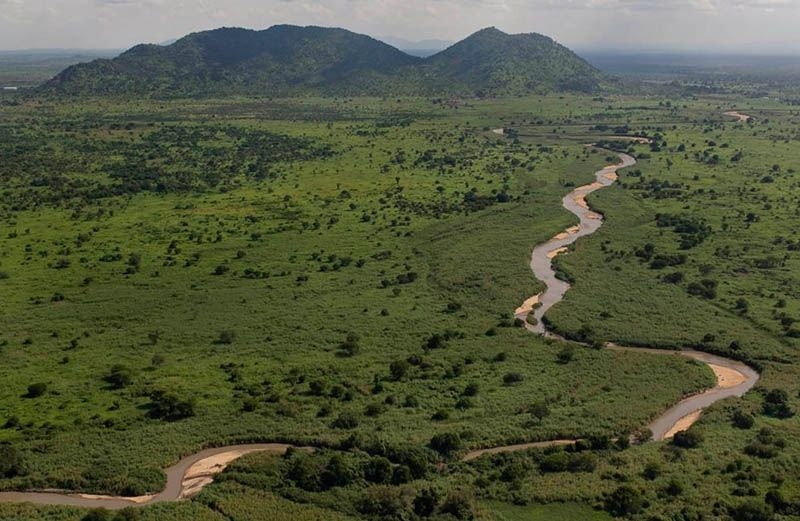
https://www.travelosudan.com/ 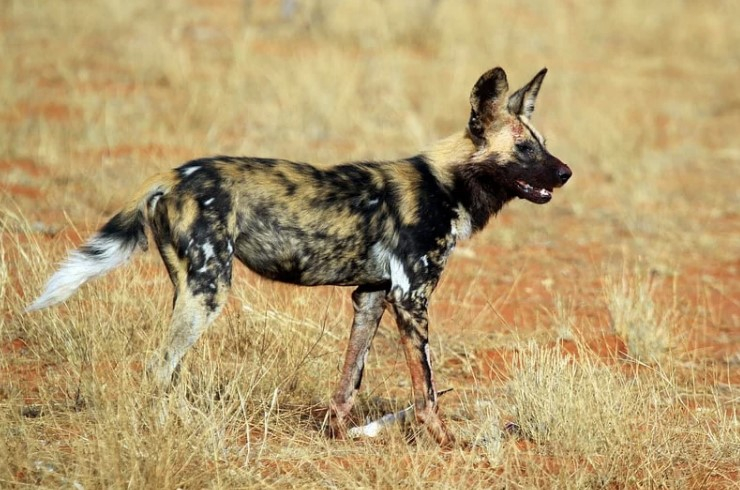
https://trek.zone/en/south-sudan/ -
Juba isn't a city with a lot of history. It was founded in 1922 and straddles the bends of the White Nile River in the country's far south.
It was formerly only a remote trade port constructed by Greek merchants seeking to establish regular caravan connections between East Africa and Britain's colonial colonies.
Juba has been a battlefield in South Sudan's civil conflicts since then, and in 2011, it was suddenly promoted to the title of capital. Although there isn't much to see in this young capital of the country (particularly with the conflict raging all around), there is a lively marketplace and a slew of safari outfitters.• Location: Haile Selassie Avenue, Juba Town, South Sudan
• Timing: N/A
• Famous for: a market place for agricultural items grown in the nearby area
• Entry Fee: Free
• Best Time To Visit: The ideal time to visit South Sudan is during the dry months of December, January, and February, when temperatures in Juba range from 20 to 37 degrees Celsius.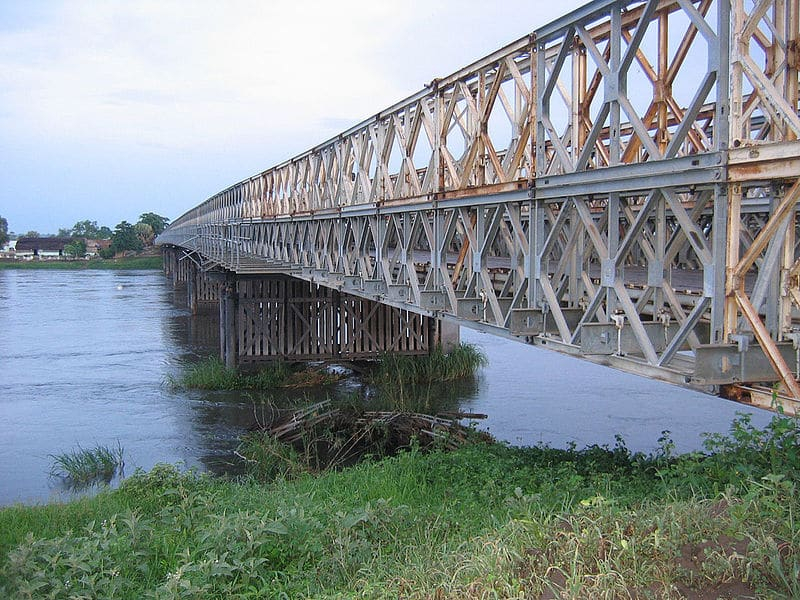
https://www.thecrazytourist.com/ 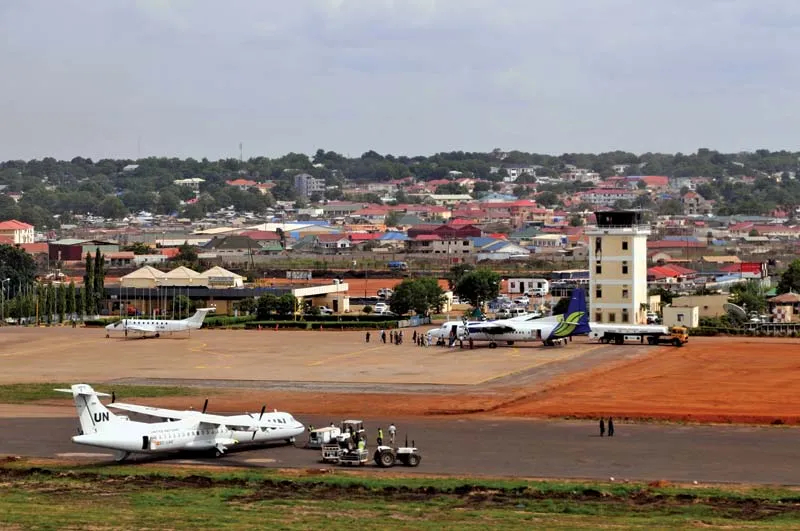
https://www.britannica.com/place/Juba -
Kodok was once known as Fashoda, the town that gave its name to the legendary Fashoda Incident, in which the power conflicts between Britain and France in colonial Africa came to a head, and the two great giants of colonial Europe finally resolved to divide Africa into east and west terms.
Today, Kodok not only commemorates these totemic occurrences in African history, but it also houses the skeletal remains of its former Shilluk rulers. Unfortunately, contemporary times have been tough for the town, with starvation and conflict.
Fashoda is thought to be a site where the spirits of Juok, Nyikango, the departed Shilluk kings, and the present Shilluk King come together to mediate for the Kingdom of Shilluk's spiritual health. Fashoda is kept as a calm area for God's spirit, where the King, leaders, and elders may hear and receive God's noises and utterances.
• Location: Upper Nile State's Fashoda County, South Sudan
• Timing: N/A
• Famous for: houses the skeletal remains of its former Shilluk rulers
• Entry Fee: Free
• Best Time To Visit: Year-round.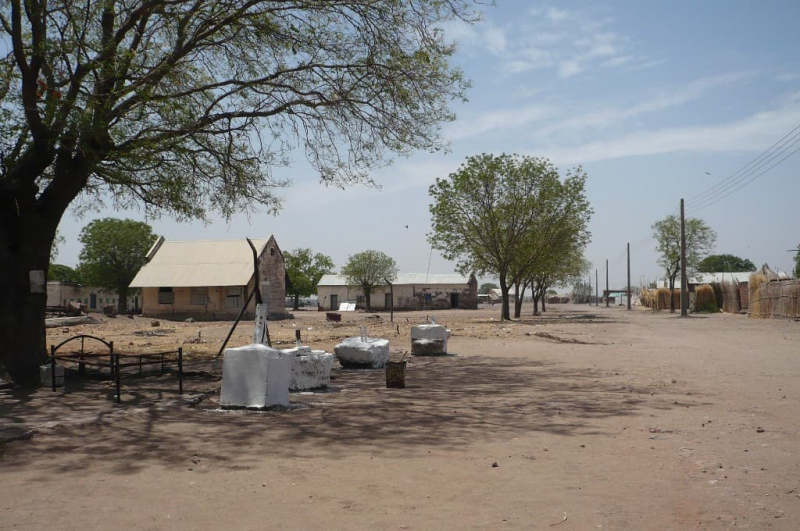
https://www.thecrazytourist.com/ 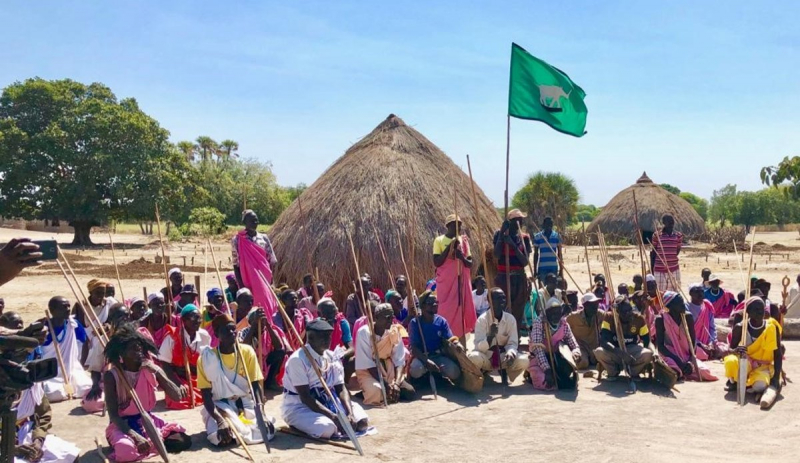
https://unmiss.unmissions.org/ -
The Nimule National Park, despite its small size, packs a powerful impact! It is home to everything from swinging baboons to hippos and snapping crocs, thanks to Nimule National Park's lush forests and some of the country's most biodiverse riparian ecosystems.
It's divided by the White Nile River's courses, which can be seen flowing northwards towards Juba - the capital is only a short drive away, and safaris to Nimule can be arranged from there.
However, Opekoloe Island, which is teeming with roving elephant herds, is the pièce de résistance. Perhaps it's the Fola Falls, where local fishermen cling to the ledges in the hope of catching a fish.Filming takes place at Nimule National Park throughout the year, but the ideal time to visit South Sudan is from June to September, which is also the best time to see animals in the park for filming.
• Location: Eastern Equatoria of South Sudan
• Timing: Open all day
• Famous for: elephants, hippopotamuses, dense bird life and crocodiles
• Entry Fee: UD$ 70
• Best Time To Visit: between June to September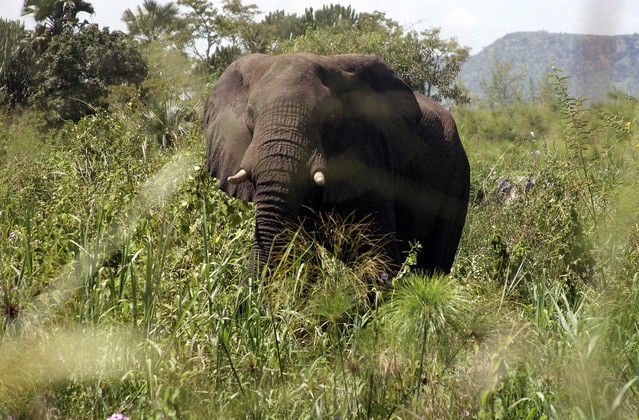
https://www.thecrazytourist.com/ 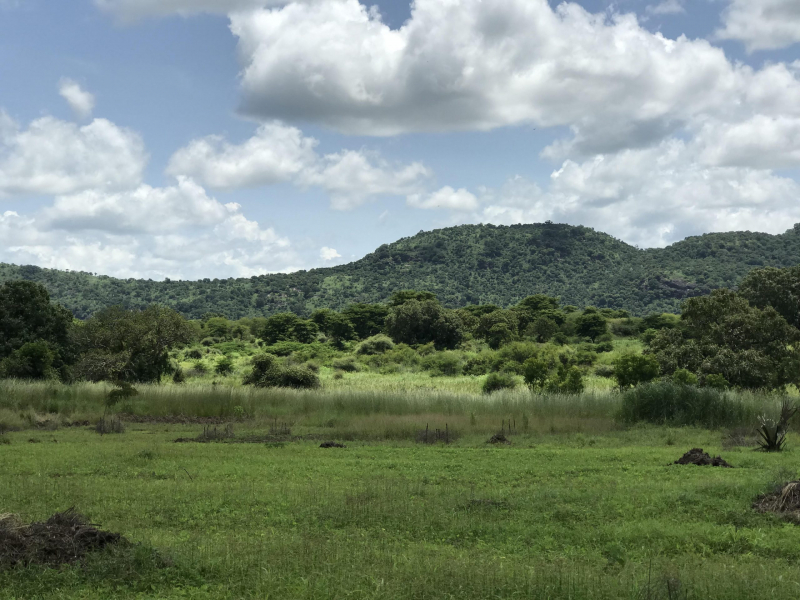
https://bomahills.com/ -
Bor, formerly the site of some of the first Christian missions to be established in this part of Africa, is now a deserted ghost town.
The recent battles have taken their toll, and the memories of killings committed during the Sudanese Civil War are still raw and passionate — around 20,000 people were slaughtered here in 1991! Regardless of the present turmoil, Bor retains its absorbing tribal character, and it remains one of the greatest venues to see a traditional Sudanese wrestling battle - the Muay Thai of Africa, if you will!
Bor is an agricultural hub for the surrounding area, including millet and sesame cultivation as well as cattle herding for sustenance. Leather and woodworking, as well as basic hide processing, are examples of traditional handicrafts. It serves as a ferry terminal on the Juba-Khartoum route. It has roads connecting it to Juba and Malakal, as well as a domestic airport.
• Location: Upper Nile, South Sudan
• Timing: N/A
• Famous for: South Sudan's historic capital is located in the country's center area
• Entry Fee: Free
• Best Time To Visit: The ideal time to visit Bor in South Sudan is between January and December, when the weather is mild to extremely hot.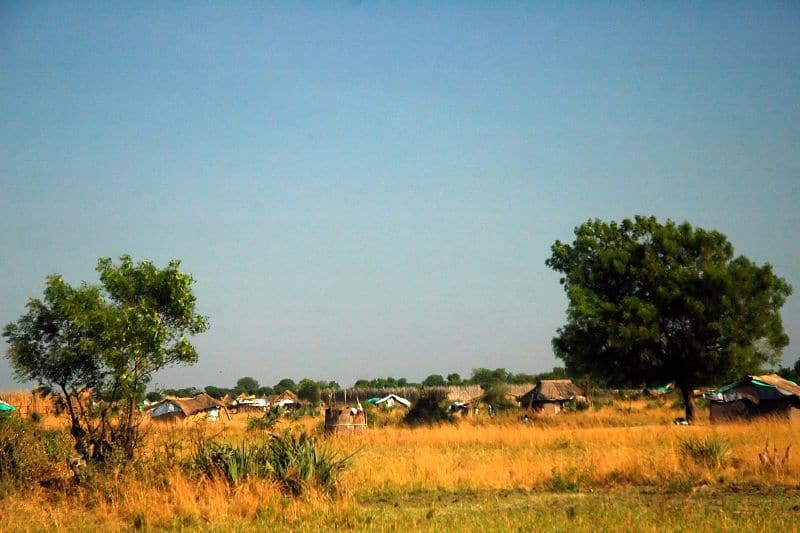
https://www.thecrazytourist.com/ 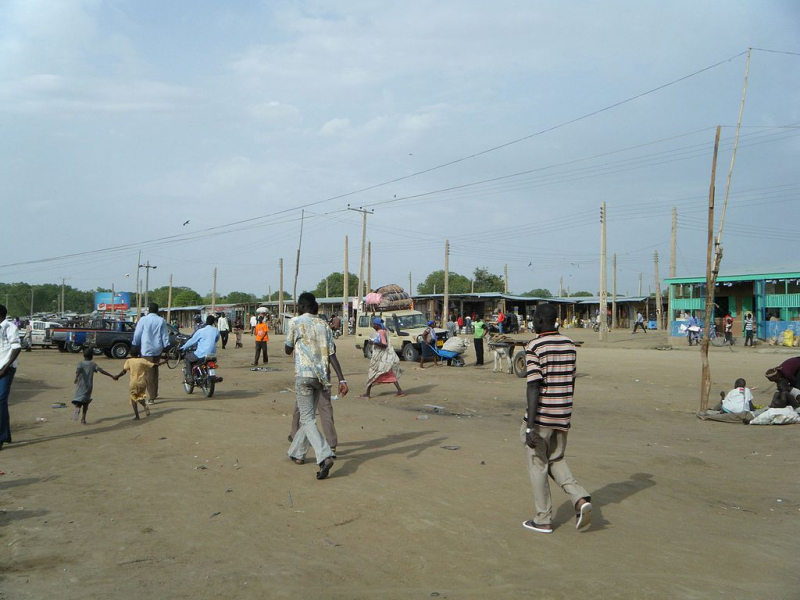
https://www.thecrazytourist.com/ -
The protected reserves of the Radom National Park, sprawled over the shaky state boundaries where Sudan meets the Central African Republic, only make their way into South Sudan for a small portion of their massive 1,250,000 hectares.
Much of the park, which is described as a forested savannah, is full covered in rivers, streams, and permanent ponds. With a lot of oxbow lakes, the Radom National Park is also a watershed area.Visitors (of whom there are few in these difficult times) can view endangered doka woodlands, wandering herds of elephants, tree-peppered grassland, bouncing gazelles, and a plethora of other uncommon East African creatures in that little area of reserve.
• Location: South Darfur, Sudan
• Timing: Open all day
• Famous for: Rich biosphere reserve
• Entry Fee: Free
• Best Time To Visit: The ideal time to visit Radom in Poland is from June to August, when the weather is nice and rainfall is minimal.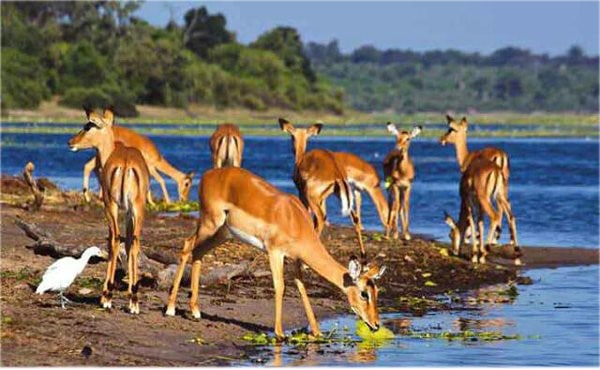
https://www.thecrazytourist.com/ 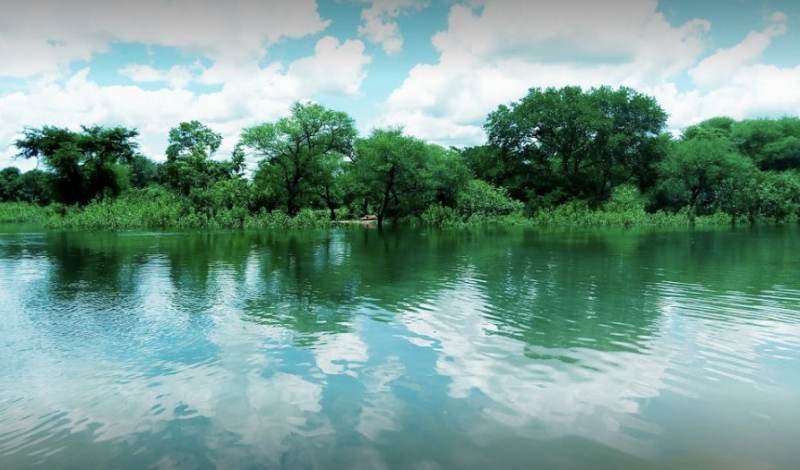
https://www.thecrazytourist.com/













